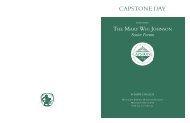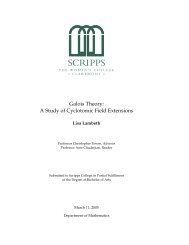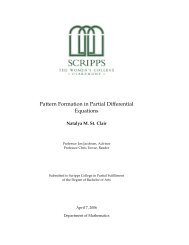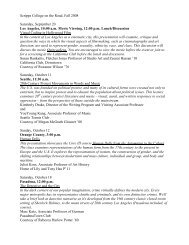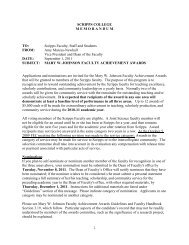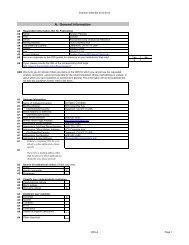Sophie Germain: mathématicienne extraordinaire - Scripps College
Sophie Germain: mathématicienne extraordinaire - Scripps College
Sophie Germain: mathématicienne extraordinaire - Scripps College
You also want an ePaper? Increase the reach of your titles
YUMPU automatically turns print PDFs into web optimized ePapers that Google loves.
The First Proof 49<br />
are positive integers. Then<br />
P 1 = A 2 + 5B 2<br />
P1 2 = (A 2 + 5B 2 ) 2<br />
= A 4 + 10A 2 5B 2 + 25B 4<br />
Q 1 = 2B 2<br />
Q 2 1 = (2B 2 )<br />
= 4B 4<br />
So P1 2 < P 0 = A(A 4 + 50A 2 B 2 + 125B 4 ) and we know 0 < P 1 < P 0 . Similarly,<br />
Q 2 1 < Q 0 = 5B(A 4 + 10A 2 B 2 + 5B 4 ) so 0 < Q 1 < Q 0 .<br />
This argument can be repeated indefinitely. That is, we can always find<br />
positive integers P n and Q n which are smaller than P n−1 and Q n−1 , respectively.<br />
By the principle of infinite descent, there can be no initial integers<br />
P 0 and Q 0 . Thus there are no non-trivial integer solutions to the equation<br />
X 5 + Y 5 + Z 5 = 0 where 10|Z. This concludes subcase A. of Case 2.<br />
Proof of Case 2. B.<br />
We are not going to prove Case 2. B. since the techniques<br />
are very similar to those used in Case 2. A. A complete proof can be<br />
seen in [6].<br />
We would begin by supposing that there is a non-trivial integer solution<br />
x, y, and z to the equation X 5 + Y 5 + Z 5 = 0. Without loss of generality, we<br />
would assume z is divisible by 5, so x and y have opposite parity.





